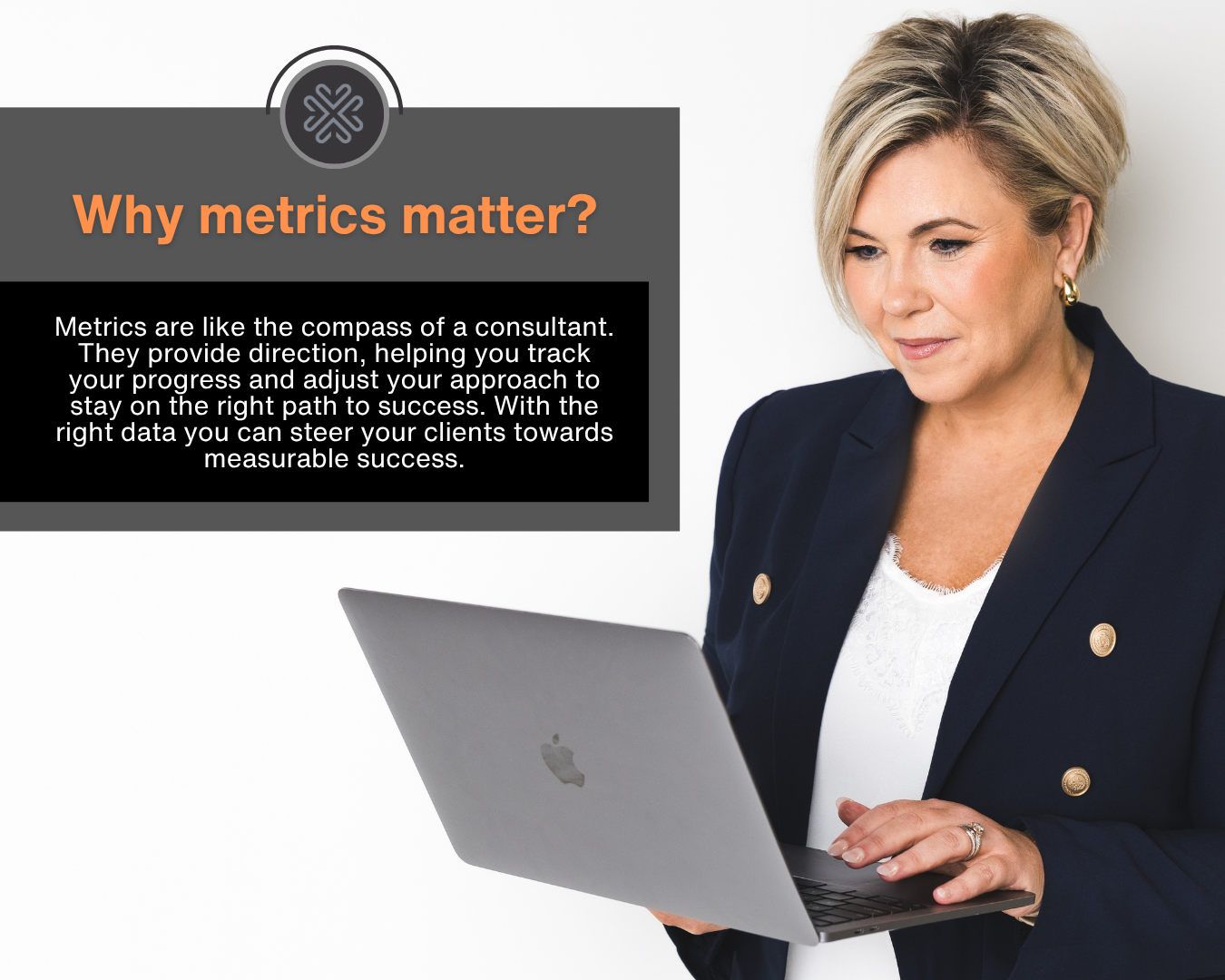How Do Consultants Measure Success? Metrics That Matter
I know an incredible productivity consultant – Sarah. Sarah worked with a struggling mid-sized tech firm, helping them to strategically align their direction and bring their talent into line to achieve that strategy efficiently. Her work made a big difference which translated into wonderful business growth.
When Sarah followed up with them, they were thrilled with the results. But they only had revenue growth to showcase these. Sarah could see smoother meetings, more structured processes, more engaged employees, but she (and they) simply didn’t have the hard data.
Being a consultant can be a tough gig. We invest our hearts and souls into our work. We spend long hours supporting our clients to gain new insights and see different ways forward. We share our expertise, usually gained from years or decades of figuring it out for ourselves. We tweak our strategies to ensure they align with our clients’ capabilities and culture.
But very often, how this is done goes unnoticed.
Your clients recognise that they’ve achieved overall success, but the hundred little reasons why remain unseen.
That’s where metrics come in.
Metrics are a fantastic way to measure progress. As a consulting coach I always focus on metrics with the consultants that I work with. They’re the tangible results – so they show you in very clear terms exactly what you’ve accomplished, whether in your own business or in your clients’. They’re also a brilliant tool for showing future clients how you can support their goals.
Tracking metrics throughout the process can also help you to identify challenges early and pivot your approach. They act as a great barometer to measure your own effectiveness, so you can continue to improve your consulting practice.
When Sarah ultimately did start tracking the data the impact of her work became undeniable. They saw the 7% increase in revenue, but they also saw an 8% drop in staff turnover and a 15% uptick in customer retention. Incredible.
Metrics can help you and your clients see the success in your practice and their business. But which metrics should you choose as a consultant? Which KPIs offer the best reflection of your work?
Why metrics matter
Imagine that you’re navigating through the Australian outback – no GPS, no map, and no compass. You might have a rough idea of where you’re headed. But without clear markers you could easily end up in the nearest billabong or struggling through thousands of kilometres of empty scrub. You need a compass to guide you.
Metrics are like the compass of a consultant. They provide direction, helping you track your progress (where you’ve been) and adjust your approach to stay on the right path to success (where you’re going). With the right data you can steer your clients towards measurable success.
How consulting coaches measure success
As a Brisbane coach working with consultants and business owners, I’ve spent years honing my craft and identifying which metrics really matter for my clients. It’s vital that these work with the KPIs that my clients actually care about – and you’ll want to find the same for your own clients.
So how should you choose metrics to use for your clients?
Metrics that fit the brief
What was the project you were hired for? What were the key goals identified by the client in those early meetings? Essentially, what was it they hired you to achieve?
Did they want to…
Increase sales?
Improve their social media presence?
Boost employee efficiency?
Improve company culture?
Sometimes your KPIs will be crystal clear from the brief. Other times, you’ll need to do a bit of digging. For example, what does ‘success’ or ‘growth’ look like to your client? What does ‘customer retention’ mean for them?
Metrics here could include:
Sales numbers, conversion rates, profit margins, customer retention rates
Social media follower count, engagement rate, click-through rate
Revenue per employee, task completion rate, quality of work ratings
Employee engagement, employee turnover, absenteeism
Metrics that align with the client’s business goals
While you may have been hired to take on a specific project, you also want to contribute to the overall business objectives. How has your consulting work added value to the company? Cross-check your individual project metrics with broader company KPIs.
Identify all the moving parts that contribute to their business goals and values. This will lead you to metrics that are meaningful for the company.
These could include:
Increased profits – sales numbers, revenue growth, ROI
Customer satisfaction – customer feedback, referral rates, customer value
Brand awareness – brand mentions, customer acquisition cost, website traffic
How to monitor and measure metrics as a consultant
First things first: streamline your metrics. We can’t measure every little thing. Choose what’s most important and shows the value you have brought to the client.
Next, make them specific. The clearer the metric, the better. This will help to make the results more transparent.
Use technology to your advantage. There’s now a wide range of performance management software and data trackers available to make your data gathering and analysing processes more efficient.
Review the data regularly. By staying tuned in to your chosen metrics, you’ll be able to stay up to date on your progress. Be adaptable when necessary.
Ultimately, metrics are here to help you. They can help you to show (rather than tell) your client the value you have provided.
You’re worth it, and metrics will help you to prove it.
Want more metrics insight from a Brisbane executive coach?
As a business consultant and executive coach based in Brisbane, I’ve had a lot of experience working with metrics. They’re fundamental to my practice, and they should be for yours too.
If you’d like more insight into this – or any other aspect of being a business coach – I would love you to join me for The Exceptional Expert. I’ll show you how to grow your practice in a sustainable way.



